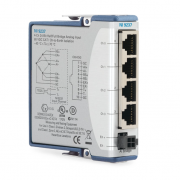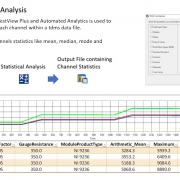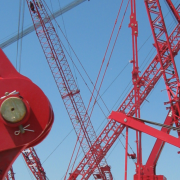How Do I Collect Vibration Data with iTestSystem and a cDAQ?
Our test engineers collect vibration data on rotating machinery using four basic tools. We use a Laptop computer with iTestSystem software to stream accelerometer and rotational/speed pulse sensor data from a National Instruments cDAQ equipped with vibration and voltage input modules. The video above shows how to collect vibration data using iTestSystem and a cDAQ.
Vibration Test Equipment
- Laptop with iTestSystem Software (Download Free Version)
- IEPE Accelerometers (607A60)
- Rotational/Speed Pulse Sensor (SICK WL9L-3P2232)
- NI cDAQ Chassis with Vibration and Voltage Modules (cDAQ-9189, NI-9234, NI-9229)
Vibration measurements are usually derived by analyzing data collected from IEPE accelerometers mounted to the rotating machinery structures and components of interest with magnetic bases or epoxy and a rotational/speed pulse sensor. Typical rotational/speed pulse sensors are magnetic pickups excited by gear teeth and keyways or optical sensors triggered by reflective tape adhered to the rotating machinery.
The most important part of the data collection process is choosing a sample rate. If you choose a sample rate that is too low, the data you have collected is useless. According to the Nyquist Theorem data must be sampled at a rate that is at least 2X the highest frequency you wish to record. 2X the highest frequency is a minimum number. Most test engineers like to sample from 2.5x to 10x higher than the highest frequency they wish to collect.
Typical general vibration measurements are sampled at 2kHz. However, vibration data collected from accelerometers and gear teeth pulses which is used for phase and speed measurements, and bearing fault detection, and torsional vibration determination must be collected at much higher sample rates like 50kHz.
Related Links
For more information about collecting vibration data, iTestSystem, data logging or test equipment rental, contact Ryan Welker @ (844) 837-8797 x702.










